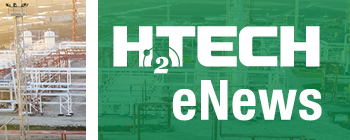News
Moleaer unveils breakthrough nanobubble process to boost battery range, H2 production and water filtration efficiency
Moleaer, the global leader in nanobubble technology, announced a patent-pending breakthrough that could significantly enhance performance of lithium-ion batteries, PEM fuel cells, green H2 generation, and water treatment membranes and filters. The innovation integrates nanobubbles into the thin-film fabrication process, improving porosity and structural quality of films used in critical technologies like batteries, fuel cells, electrolyzers, and ultra-filtration membranes.
This new, non-invasive method introduces billions of nanobubbles into liquid coatings during production, optimizing pore size distribution and enhancing mixture dispersion, key factors in optimizing thin film performance. By stabilizing inks, improving layer uniformity, increasing functional surface area, and optimizing pore size distribution, the process produces films with consistent and controllable porosity and particle sizes. These enhancements translate into improvements in efficiency, power output, and durability across clean technology sectors:
- PEM fuel cell cathode catalyst layer: up to 20% higher power output from the same active area, reducing size, weight, and cost per watt for applications like vehicles and portable power systems.
- Ultrafiltration membranes: up to 66% increase in water permeability due to increased surface porosity and cross-sectional porosity, while maintaining structural integrity and water quality, leading to reduced energy consumption.
- PEM water electrolyzers (green H2) anode catalyst layers: 17% improvement in current density at operational voltages, lowering the energy and cost of green H2
- Lithium-ion NMC cathodes: increased capacity retention and enhanced performance at high C rates supporting extended battery cycle life and faster charging.
"Thin films are foundational to clean energy and water technologies, yet traditional manufacturing methods limit how much performance we can unlock from them," said Nick Dyner, CEO of Moleaer. "Our nanobubble-enabled process addresses those limitations, without changing formulas or processes, delivering gains in power, efficiency, and sustainability."
The patent-pending process has been independently validated and peer-reviewed, demonstrating that nanobubbles can be precisely and reliably introduced into production lines. This method influences nanoscale material organization, enhancing uniformity, minimizing defects, and improving overall thin film performance.
"Nanobubbles act like invisible scaffolding," said Dr. Mohamed Abdelrahman, Senior R&D Application Engineer at Moleaer. "They improve how materials self-organize during fabrication, leading to higher-performing films with less waste and fewer defects."
As demand for clean energy and water technologies accelerate, Moleaer's innovation presents a timely, cost-effective solution. The process is fully compatible with existing coating techniques, enabling seamless adoption by manufacturers looking for performance improvements without added complexity.

